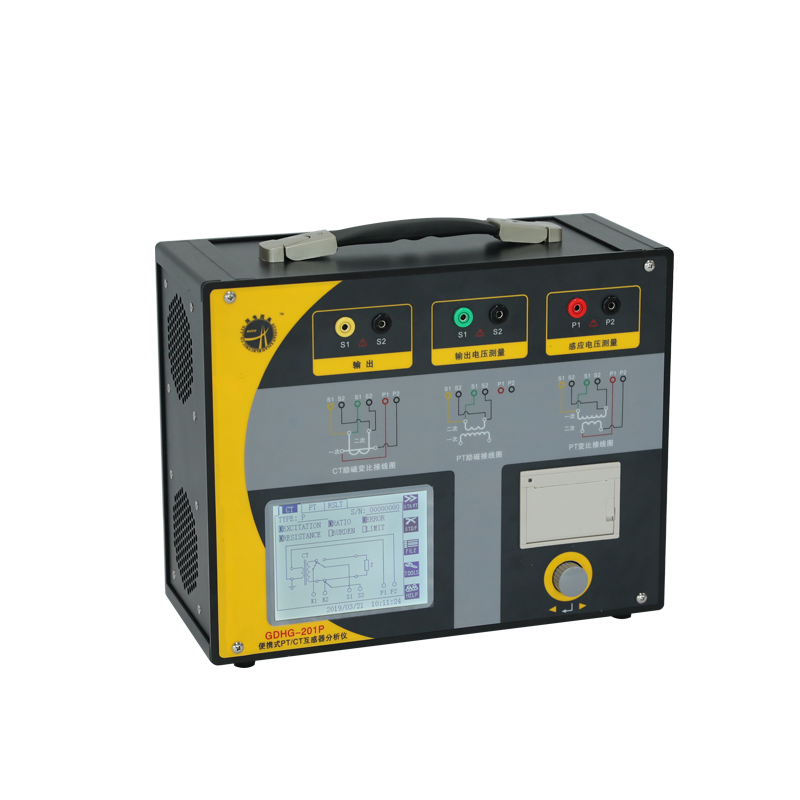Current Transformer Characteristic Comprehensive Tester, also known as CT/PT Analyzer, is a multi-functional on-site testing instrument specially designed for relay protection professional testing of current transformer volt-ampere characteristics, transformation ratio testing and polarity discrimination. It can also be used as a transformer. Measuring instrument for polarity discrimination tests. With the characteristics of light weight, convenient operation and excellent performance, it is a cost-effective product.
In fact, the accuracy of the transformer tester is not an important indicator of the instrument. In the transformer verification regulations, it is required that the test error caused by the entire circuit should not exceed 20% of the tested transformer level. The data presented in the work must be authentic.
Common technical problems during testing:

GDHG-201P Portable PT/CT Transformer Analyzer
1. Frequency selective filter performance
Transformer verification is the measurement of the fundamental wave. Since the standard secondary current and the secondary and tertiary error current waveforms of the transformer under test are greatly distorted and modulated by high-frequency interference, the tester must have a good frequency selection. Filter performance, isolate fundamentals, and make measurements. The factors that cause distortion are very complex. In the low-precision (less than 0.5) transformer test without saturated iron core compensation, the general distortion is about 10%, and the influence is not obvious. The national standard requires the harmonic attenuation of the tester to be over 32dB, which is sufficient for use. However, when testing high-precision transformers or transformers with saturated iron cores, the index is low. There is no measurement for domestic verification of this project, and general manufacturers often do not give indicators. When purchasing a new instrument, users should compare it with the old instrument to determine whether it is trustworthy.
2. Introduce load and match with standard transformer
The additional load brought by the tester to the tested transformer and the load brought by the tester to the standard transformer are strictly regulated in the regulations. Domestic metrology verification does not detect these indicators, and most manufacturers do not provide indicators, but they are one of the main reasons for the different test data of different units.
3. Line load
When making load Z, reserve a resistance of 0.06 ohms for the connecting wires (some have 0.05 ohms), so the sum of the resistances of the three wires A, B, and C in the figure is required to be 0.06 ohms for testing. When verifying current transformers at small rated loads (10VA), the resistance of the wires has a large effect on the data.
4. Ground cable
Since it is a power frequency measurement, the space electromagnetic field and the floating potential have a great influence on the measurement. In testing, the ground wire plays an important role. The ground wire must be properly grounded according to regulations, which is especially important when testing above 0.05 or high voltage. It is recommended that users should choose a complete set of equipment manufacturers with many years of industry foundation when purchasing instruments, rather than single-piece manufacturers. There are essential differences between the two in the theory and experience of transformer testing. The correct selection can ensure that the indicators of the instrument meet the requirements of regulations.
Post time: Dec-13-2022
